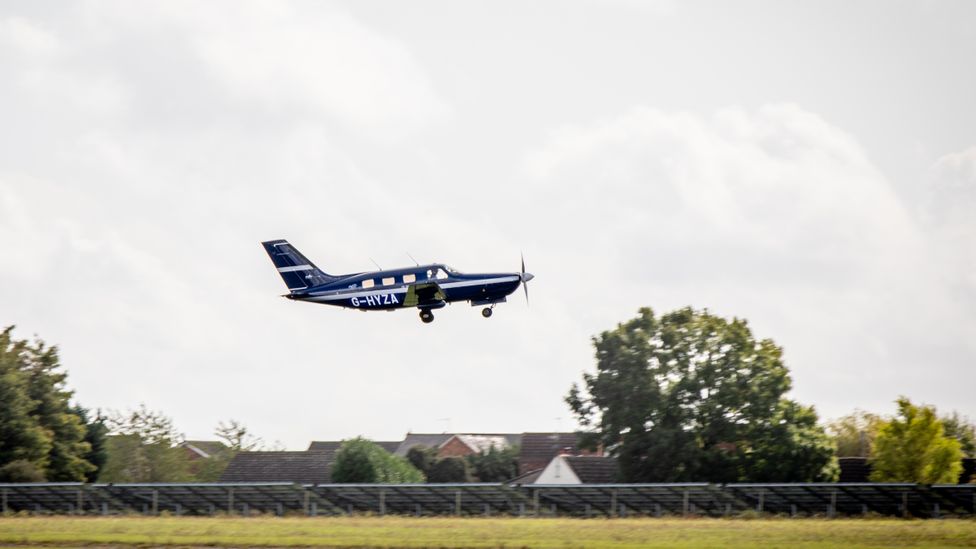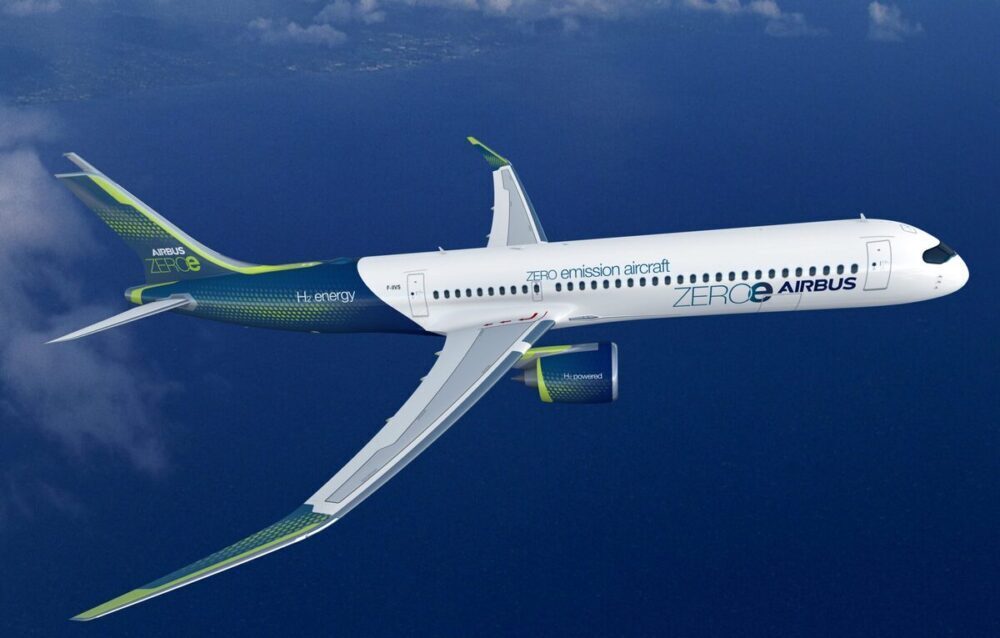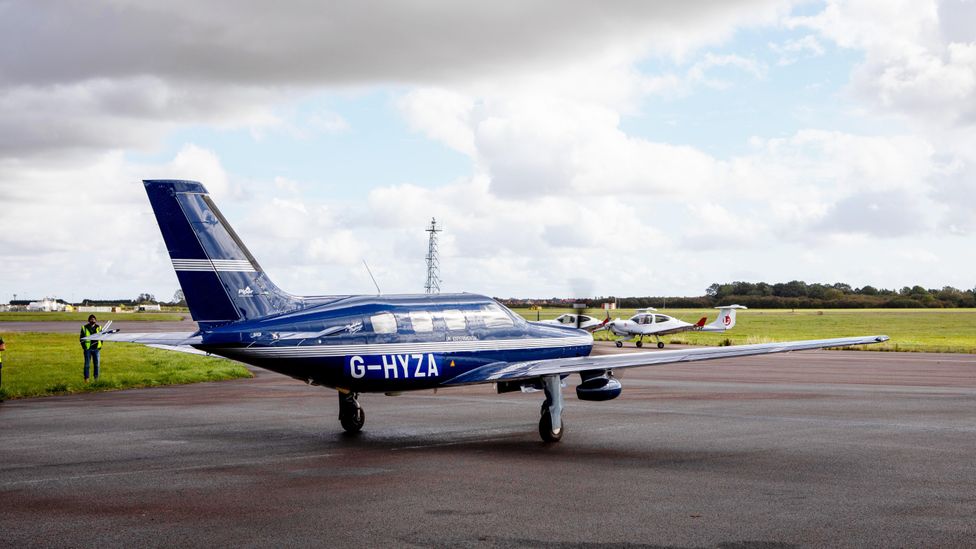Record-breaking commercial-scale hydrogen plane has taken off in the UK, with more set to join it soon. How far can such planes go in cutting the aviation industry’s emissions?

Th following written content from Caspar Henderson
As the plane rose from the runway for what was to prove a smooth and uneventful flight, the team breathed a sigh of relief. The six-seater Piper M-Class had been fitted out at a research and development hub at Cranfield airport in the UK to run on hydrogen, and on this maiden flight in the late summer of 2020 everything worked perfectly. With that flight, ZeroAvia, the California-based start-up that had developed the aircraft with partners in Britain and elsewhere, was ready to move to the next stage in the journey towards zero carbon aviation.
A catchphrase for the transition to a low or zero carbon economy is “electrify everything” – that is, create a world in which most human activities, from manufacturing and construction to transport and tourism, run on electricity generated from low or zero carbon sources such as wind, solar and perhaps nuclear power. But there is a problem: some sectors look to be hard if not impossible to electrify in the near and medium term, and aviation is, perhaps, foremost among them.
Before the pandemic grounded most flights, commercial aviation accounted for about 2.5% of global emissions of carbon dioxide. It sounds like a small proportion of the whole, but it is more than those of Germany (2.2%), and this is not the whole story. Carbon dioxide accounts for about half of aviation’s contribution to what is known as its effective radiative forcing – that is, its total contribution to the factors that actually drive a rise in global average temperature. Contrails – water vapour trails from aircraft – are aviation’s largest other factor.

Importantly in the context of flight, hydrogen packs a lot of energy per unit of mass
The good news is that commercial aviation has an excellent track record in improving efficiency. Carbon dioxide emissions per passenger flight have fallen more than 50% since 1990 thanks to improved engines and operations. The bad news is that these gains have been overwhelmed by rising volumes of air traffic. This has increased by at least a fifth over the past five years, and is predicted to reach 10 billion passengers a year by 2050.
At first glance, hydrogen looks to be a good solution to the challenge of flying without wrecking the climate. Whether hydrogen is used to power a fuel cell to generate electricity or directly combusted for motive power, the only waste product is clean water. Importantly in the context of flight, hydrogen packs a lot of energy per unit of mass – three times more than conventional jet fuel, and more than a hundred times that of lithium-ion batteries.
Governments and companies are investing in this potential. ZeroAvia’s 2020 hydrogen-powered flight, known as HyFlyer I, was supported by the UK Government, whose Jet Zero Council promises “a laser focus on UK production facilities for sustainable aviation fuels and the acceleration of the design, manufacture and commercial operation of zero-emission aircraft.”
The UK government, together with private investors and commercial partners are supporting ZeroAvia in the development of an aircraft with a hydrogen-electric (fuel cell) powertrain capable of carrying up to 20 passengers about 350 nautical miles (648km). ZeroAvia’s founder and chief executive Val Miftakhov, says the company expects to offer commercial flights using such a plane as early as 2023, and that by 2026 it will be able to realise flights over a range of 500 nautical miles (926km) in aircraft with up to 80 seats. For 2030, Miftakhov has even bigger plans: “We will have single-aisle jets, 100-seat category,” he says. Read more from BBC





